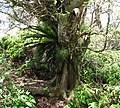Fil:Bobea elatior (4743751500).jpg

Storlek på förhandsvisningen: 669 × 600 pixlar. Andra upplösningar: 268 × 240 pixlar | 535 × 480 pixlar | 857 × 768 pixlar | 1 142 × 1 024 pixlar | 1 887 × 1 692 pixlar.
Originalfil (1 887 × 1 692 pixlar, filstorlek: 1,06 Mbyte, MIME-typ: image/jpeg)
Filhistorik
Klicka på ett datum/klockslag för att se filen som den såg ut då.
| Datum/Tid | Miniatyrbild | Dimensioner | Användare | Kommentar | |
|---|---|---|---|---|---|
| nuvarande | 15 november 2012 kl. 09.14 |  | 1 887 × 1 692 (1,06 Mbyte) | File Upload Bot (Magnus Manske) | Transferred from Flickr by User:Tim1357 |
Filanvändning
Följande sida använder den här filen:
Global filanvändning
Följande andra wikier använder denna fil:
- Användande på fr.wikipedia.org
- Användande på war.wikipedia.org
